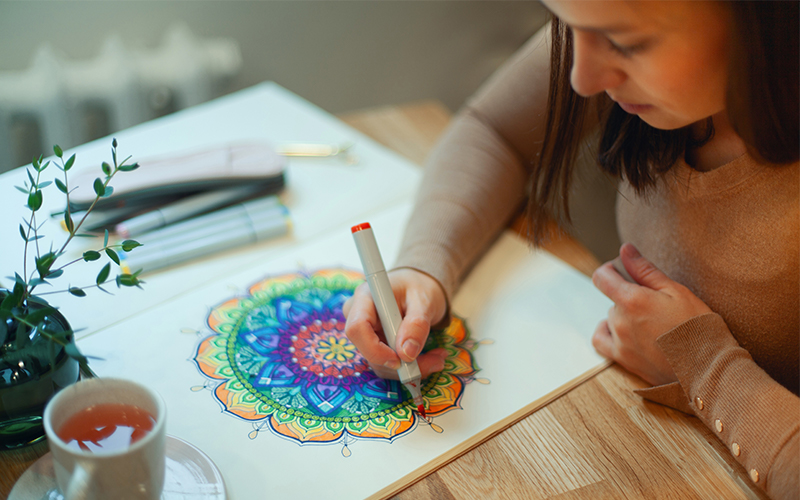
Imagine you just won a game of chess, your intramural team won a baseball game, or you completed a work project on time and with ease. You might say, “I can’t really explain it. I was just in the zone!” You didn’t overthink it; you just made a series of decisions as they came to you, and the results were successful. If this sounds familiar to you, you may have experienced what is called flow state, or “being in flow.”
Happiness researcher, Mihaly Csikszentmihalyi [pronounced: me-high cheek-sent-me-high], developed the concept of flow state, to describe this specific state of being that we may be aware of after doing an activity. Flow state has been found to be useful as a boost to overall happiness, creativity and efficiency. It is important that it’s found in your work, as well as your hobbies and personal interests, to be both productive and content in life. Achieving flow state can also be used as a method to step out of stress and anxiety, as it has been shown to be an effective technique to improve well-being when people are enduring waiting periods.
After studying flow state, Dr. Csikszentmihalyi found several common things that occur for those who experience it:
1. There are no distractions.
2. The activity is challenging, but you have the skills to do it.
3. The steps needed to complete the task are clearly defined.
4. It’s easy to lose track of time.
5. You don’t experience self-conscious feelings about your performance.
6. You are not afraid of failing; in fact, failure may not even cross your mind.
7. There is immediate feedback: it’s easy for you to see how you’re doing with the task.
8. The activity provides a sense of purpose and feeling of satisfaction upon completion.
Being in a flow state when becoming involved in an activity often feels like we abandoned our fears, self-limiting beliefs, and fear of failure for a certain period of time. The task is often challenging and requires intense concentration, but performance appears to be effortless due to a skillset well-suited to the task. It is important to note that being in flow does not mean something is easy, or that it took place in a miraculous way. Although, sometimes miraculous performances in sporting events can result from the athlete being in a flow state. Time passes by without being noticed, and we feel satisfied with our performance afterwards.
Here is a list of some activities to consider exploring and see if you can achieve your own sense of a flow state more frequently in your life.
- Puzzles
- Reading
- Working on a project
- Art
- Gardening
- Sports
- Photography
- Sewing
- Writing
In her research, Kate Sweeny, PhD, and professor of psychology at University of California Riverside, found that being able to drop into a flow state is helpful for coping during periods of waiting. The pandemic has been a period of waiting—along with added stressors, life changes with jobs, schooling, and being apart from loved ones. When this research on flow state has been applied to waiting associated to the pandemic, it was revealed that those who can find a state of flow are better off.
You don’t have to be a professional to get into a state of flow, but it will likely mean that you are completing an activity you’ve practiced many times, or at least one that is familiar to you. There are an infinite number of activities to participate in to experience a state of flow. It’s important to remember that an activity that may put one person into a flow state, may be too challenging or not enjoyable for another person. This is why it’s important to make your own list of activities based on the description of flow state.
To learn more about Dr. Csikszentmihalyi’s research with flow state, you may explore this video.
Dietrich A. (2004). Neurocognitive mechanisms underlying the experience of flow. Consciousness and cognition, 13(4), 746–761. https://doi.org/10.1016/j.concog.2004.07.002
TED Talk. (2008, October 24). Mihaly Csikszentmihalyi: Flow, the secret to happiness [Video]. Youtube. https://www.youtube.com/watch?v=fXIeFJCqsPs&feature=emb_title

